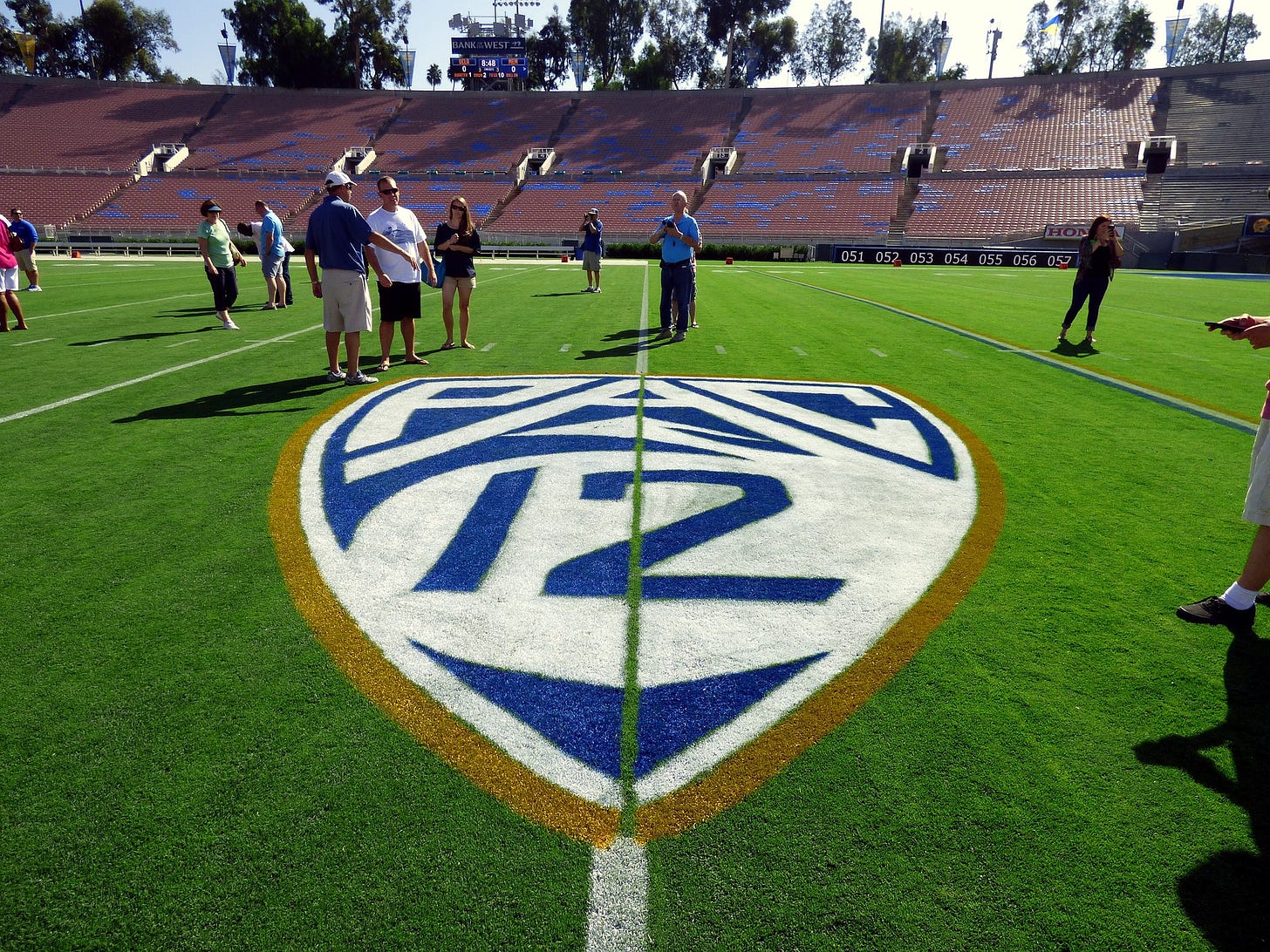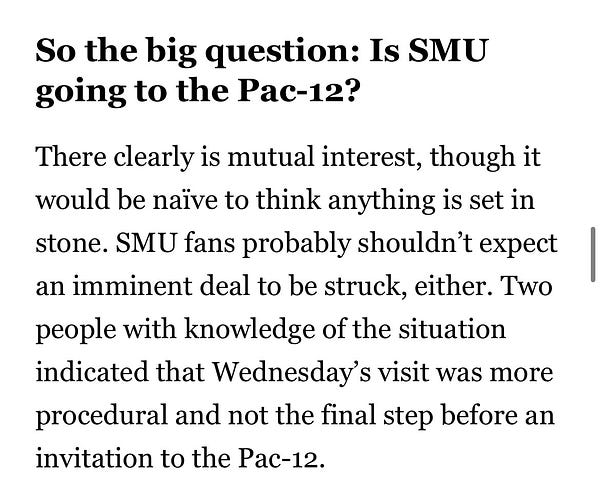
As the college football world heads into a new era, realignment is the major talking point. Oklahoma and Texas are kissing goodbye to the Big 12. The Big 12 answered by adding Houston, Cincinnati and UCF from the American Athletic Conference and independent BYU. This major realignment even trickles down to the Group of Five and FCS ranks, where the C-USA, Sun Belt and AAC are in periods of change.
One conference with the most interesting realignment status, though, is the Pac-12. Their two most prominent members, USC and UCLA, are poised to exit for the midwestern powerhouse Big 10. Without those two, the conference is at a crossroads. So, how has this situation gotten so dire? Let’s take a look.
The state of the Pac-12 (or 10, who knows)
Currently, USC and UCLA are remaining in the conference until the fall of 2024, so that move is still over a year away. For the remaining year and a half, the remaining 10 schools need to figure out what the path forward is.
The league is headlined by Washington and Oregon in the wake of the L.A.-based schools’ departure, which isn’t the biggest headline. Both have had solid years in football recently, with Oregon showing potential on the basketball court as well. Both are quality academic schools, which aligns with Cal (or, better known as California-Berkeley) and the rest of the conference. All-in-all, the league seems to be stable, with not many schools looking to jump ship. Even when the Big 12 called about expansion, the remaining teams stood together.
On the football field, the league also fields one of the nation’s most intriguing teams: the Coach Prime-led Colorado Buffaloes. With that major transfer haul (more on that in other articles to come), the conference can hopefully move past the cannibalizing of years past and have some legitimate College Football Playoff contenders, especially with playoff expansion coming soon.
It’s up to commissioner George Kliavkoff to navigate the league’s most difficult adversary: a media rights deal.
Why is a media deal such a big deal?
Athletic programs receive most of their funding from media deals. Power Five conferences like the Pac-12 could usually command major dollars. With the new landscape shaping up towards a Power Two of the Big 10 and SEC, though, the league is in dire straights.
The Big 10 commanded a record-breaking seven-year, $1.2 billion annually deal from CBS, Fox and NBC in August. And that only includes football and basketball. The SEC held the previous record with a 10-year, $300 million annual payout with ESPN signed in 2020, which runs from 2024 to 2034.
The Pac-12 has not had the same success. When Kliavkoff took over as the conference commissioner in 2021, he inherited a conference already at a crossroads. Previous commissioner Larry Scott hadn’t done much in recent years to move the needle towards more views on the conference. Sure, Pac-12 After DarkTM is a mainstay of college football, but how many of us are tuning in to see a riveting matchup between Utah and Washington with a conference title berth on the line? Not many, since the game is on at 11 p.m. Eastern.
Scott at least had UCLA and USC to fall back on, though. One, USC, being a football powerhouse that is on the rise behind new hire Lincoln Riley and Heisman winner Caleb Williams. The other, UCLA, being a traditional basketball blue blood, and has a strong football program to boot. Those are both gone.
Now, the conference is floundering and struggling to find a new partner. Action Network’s Brett McMurphy reported on Feb. 15 that CBS and Turner, the media conglomerate that owns TBS, TNT and TruTV, are out on the conference.

Amazon has reportedly been “playing hardball” with Kliavkoff and the conference and is unwilling to cut the struggling league any slack. The same report from Front Office Sports said that ESPN exec Bob Iger wanted to be selective with their new media rights deals. Coupling that with the sports media empire downsizing its staff makes a Pac-12 deal unlikely.
So, what’s next?
In order for the conference to survive, they need to secure a lucrative media rights deal. Washington and Oregon have already had some discussions with the Big 10 about leaving, and rumors have surrounded Cal and Stanford also following in USC and UCLA’s footsteps. Arizona and Arizona State have reportedly had discussions with the Big 12, and Colorado has a wealth of history with that conference.
As a media deal looks more and more unlikely, Kliavkoff has turned to the only way to raise a conference’s value possible for a commissioner: expansion. A report from Jason Scheer of Wildcat Authority has San Diego State joining the conference soon. Dallas News’s Joe Hoyt has also reported on SMU likely joining the conference.



Adding two schools definitely bumps up the conference’s value, but is it enough? San Diego State has been one of the nation’s most successful Group of Five schools in football and both men’s and women’s basketball. They have a stunning new stadium in Snapdragon Stadium, and are the only big show in San Diego besides the Padres. They’re within the conference’s footprint, and make sense.
SMU, though, is a different story. It’s in a completely different market in Dallas, Texas, and hasn’t had the same success as SDSU. They have a large donor base, though, and could make a huge jump with the funding increase that goes along with jumping from Group of Five to Power Five.
Is the new market worth it, though? Based on previous moves to “capture” a new market, we can see only one glaring example: Rutgers. And that move has been no success. In fact, it can be chalked up as a failure as the Scarlet Knights haven’t made much of any noise in the Big 10 in any sport. Even the viewership draw is negligible, and the New York market still appears untapped for the major conference.
One thing to keep in mind is the fact that the media organizations are aware of these potential additions. These things don’t happen overnight, and in the midst of multi-billion dollar negotiations, everything is on the table. With media organizations pulling interest left and right, there isn’t much more room for the Pac-12 to grow. They’re running out of options. Will the conference survive? That’s yet to be seen, but Kliavkoff and his team will not go down without a fight.




